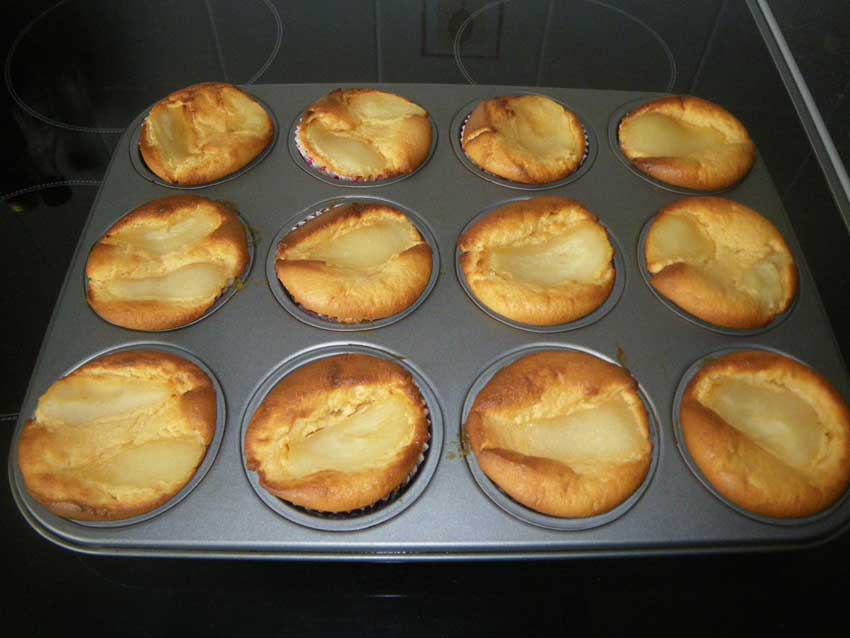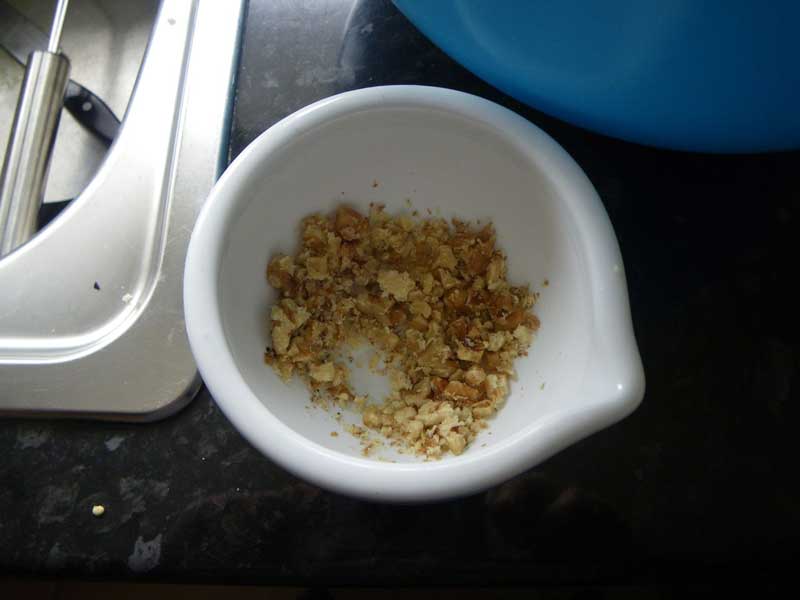Evolving Curry Recipes
We quite like curries, nothing too hot and spicy but a nice thick saucy curry with plenty of flavour. We have always cooked them and often enjoy a curry night. I don’t remember having ever used a jar of curry sauce though as we like to cook from scratch if possible and of course our recipes change from time to time and evolve as we get better at them.
Simple, Delicious Curry Recipe
I think we started by using a Jamie Oliver recipe from one of his books aimed at getting people into cooking. These curry recipes did use jars, not of curry sauce but the jars of Pataks curry paste as the main blend of herbs and spices to give the curry its distinctive flavour. This does sound a little like cheating but the rest of the curry was made with fresh ingredients and the curry pastes made things convenient. They aren’t too expensive, last well in the fridge once opened, come in a range of different blends and mean that you don’t need a cupboard full of exotic spices most of which are past their best before dates.
The original recipes in the book however had very little in the way of vegetables in them and we like to think of a curry as a complete meal when served with rice or naan. We therefore modified the recipes over time so that we reduced the amount of meat, added lots of vegetables, used the curry paste as the spices and cut down on a few steps so as to make a simple, inexpensive curry that tasted great, was easy to make and served at least six people.
The basic recipe went something like this.
- First whizz up some garlic, ginger and coriander in a mini food blender.
- Sauté a finally chopped onion or two, along with a couple of finely diced carrots in olive oil and a knob of butter along with the garlic, ginger and coriander. We’d do this in a large sauté pan for about 10 minutes until the onions are soft and a gorgeous golden brown colour.
- Add diced chicken thighs or breasts, and a tablespoon or two of balsamic vinegar and continue to fry for a minute or so.
- Add the veggies. You can go with whatever you want here but our usual suspects were par-boiled potatoes, sweet potato and/or butternut squash. Whatever we had available really, sometimes we’d add sprouts or cauliflower. Any vegetables will do, although if we were adding spinach we’d save that until later.
- Add some kick. We’d add a chopped fresh chilli or two at this stage if we fancied a bit of heat in the curry. Although the exact number would depend on who we were catering for.
- Add the sauce. This would consist of a couple of tins of tomatoes, half a jar of the pataks curry paste (usually the Rogan Josh or Balti blend) and some extra water. This would all be stirred together. Of course, if we were making a korma then the tomatoes would be replaced with coconut milk and we probably would adjust the vegetables to suit as well.
- We’d then add a handful or two of lentils (along with a tin of chick peas and some desiccated coconut in a korma), and then leave the whole thing simmering for an hour or so.
We’d end up with the house smelling of a delicious fragrant curry, and a sauté pan filled to the brim. There would be plenty for six portions so we’d generally have curry for two nights in a row and put two portions in the freezer for a day when we didn’t have time to cook. The curries were always a little different each time but they were always very tasty and made a very satisfying complete meal when served with rice and either shop bought naan breads, or delicious home made ones.
Spicing it up.
Pat bought me a subscription to a ‘World of Spices’ from thespicery.com for my birthday, along with Rick Steins ‘India’ cookbook. This means that we have been getting into the spices themselves a little lately and have been creating some curry dishes without the curry paste blends. We started off following a couple of recipes from the book almost to the letter to produce a tangy, fragrant chicken passanda and a really nice vegetable dish of dry curried cabbage, carrot and coconut.
I liked them both and the fresh spices did add a depth of flavour to the food as well as a lovely aromatic ambience to the kitchen whilst cooking with them. Anna liked them too, although she didn’t think they necessarily complimented each other when served together.
Cooking in this fashion does mean that you need a whole range of spices though and it is a little more involved than the basic curry recipes above. It’s fun to do when you have the time and creating your own blend of spices is nice to do, but it isn’t straight-forward, nor quite as cheap.
Rick Steins book has a whole range of Indian cooking in it, including snack such as pakoras and breads, vegetable dishes such as the curried cabbage, carrot and coconut that we have already tried, and even some Indian desserts. The bulk of the book is dedicated to meat and fish curries though, many of which are fairly dry curries in comparison to those we are accustomed to and don’t necessarily contain vegetables. In our quest for the all in one meal that isn’t too expensive to cook but contains the delicious flavours of India we have therefore already started experimenting and coming up with our own recipes based on some of those in the book.
Butter Chicken Curry Recipe
Ingredients
Marinade 1
Juice of 2 limes
1 tsp chilli powder
1 tsp salt
Marinade 2
100ml Natural yogurt (homemade yogurt for us)
50ml double cream
4 cloves garlic
5cm fresh ginger
1tsp garam masala
1tsp turmeric
½ tsp ground cumin
sauce
50g butter
3 cloves of garlic
5cm ginger
1 onion
2 carrots
Sweet potato (or other vegetables)
Tin of chopped tomatoes
½ tsp chilli powder
½ tsp ground coriander seeds
½ tsp cumin
½ tsp ground cinnamon
½ tsp garam masala
1 tsp desiccated coconut
25g cashew nuts
25g pumpkin seeds
The remaining marinade
Last nights curry recipe was based on the Butter Chicken Recipe. This called for two marinades for the chicken, which was then cooked in the oven before being added to a creamy slow-cooked sauce. This is all well and good, but we didn’t have time to marinate the chicken as much as suggested in the recipe. I’ve also never really liked the idea of making a flavoursome marinade, only to discard those ingredients once the meat has sat in it for hours. This always seems like a waste of good ingredients to me. I therefore decided to make a few changes to the recipe, add lots of vegetables, quickly marinate the chicken and re-use the marinade ingredients in the sauce. Here’s what we did.
Marinades
- Chop the Chicken Breast into large bite sized pieces
- Mix the lime juice, chilli powder and salt together in a large bowl and marinade the chopped chicken in it for around 20 minutes. Cover the bowl and put it in the fridge while it does so. If you have the time then an hour would be better but we didn’t have the time.
- Put all of the ingredients for the second marinade into a blender and mix to a smooth paste. Add this to the marinated chicken and stir well, then cover and marinate in the fridge again. We let it sit for just over an hour, longer would be better, even overnight, but if you don’t have the time don’t worry as we’ll be using the marinade sauce later so those flavours and ingredients won’t go to waste.
Cook the Chicken
Once marinated, place the chicken pieces on a wire rack over a roasting tin and cook in a hot (240ºC) oven for around 15-20 minutes until they have just started to char.
Make the sauce
- While the chicken is cooking you can make the sauce.
- Heat the butter in a large pan over a medium heat.
- Grate the ginger and press the garlic through a garlic press and add this along with the finely chopped onion and carrots to the pan. Sauté this for 5-10 minutes until the the onions have softened. Next add the chopped vegetables. As with the earlier recipe you can use whatever you like but we used chopped sweet potato.
- Fry for a minute or so and then add all of the spices and stir.
- Next add the tin of tomatoes and the creamy, spicy sauce that you marinated the chicken in. We also added a teaspoon of desiccated coconut at this stage but I’m not really sure if that added much to the overall dish.
- Add the chicken
- Add some water and simmer
- Whiz up the pumpkin seeds and cashew nuts until fine and add these to the curry. Again, I’m not sure how much this actually added to the overall taste so we may not always include them.
- Simmer until the chicken is fully cooked and the vegetables are soft. Or until your rice is cooked if you didn’t put it on early enough!
We then served it with the fluffy rice and some Tibetan Steamed Bread. The curry itself was a delight. Tender, lovely flavoured chicken in a rich, creamy vegetable-filled sauce with loads of aromatic flavours and of course plenty of it.
The Tibetan Steamed Breads are like little cinnamon rolls filled with a garlic, tomato and onion paste (not cinnamon and sugar) and steamed in a steamer. We actually made about 20 of these, steaming half of them and baking the other half to see how they turned out. We ate the steamed ones with the curry and they were perfect. Anna really liked these so we’ll be making them again. They looked a little pale and bland in a way, but weren’t at all. They puffed up nicely and complimented the curry well. We haven’t tried the baked ones yet but will do so today. The baked ones actually look a little better as they have some colour to them where they have been baked, but they haven’t puffed up quite so well. Maybe we’ll try baking them in a cooler oven next time.
We have plenty more curry recipes to try out yet and we’ll gradually stock up on some of the more exotic spices too. There are almost too many to try, so sharing them here on our weblog will probably be a good thing as we often look back for recipe reminders and to find out which dishes have been a success. I hope they are of help to you too.
















Sounds delicious